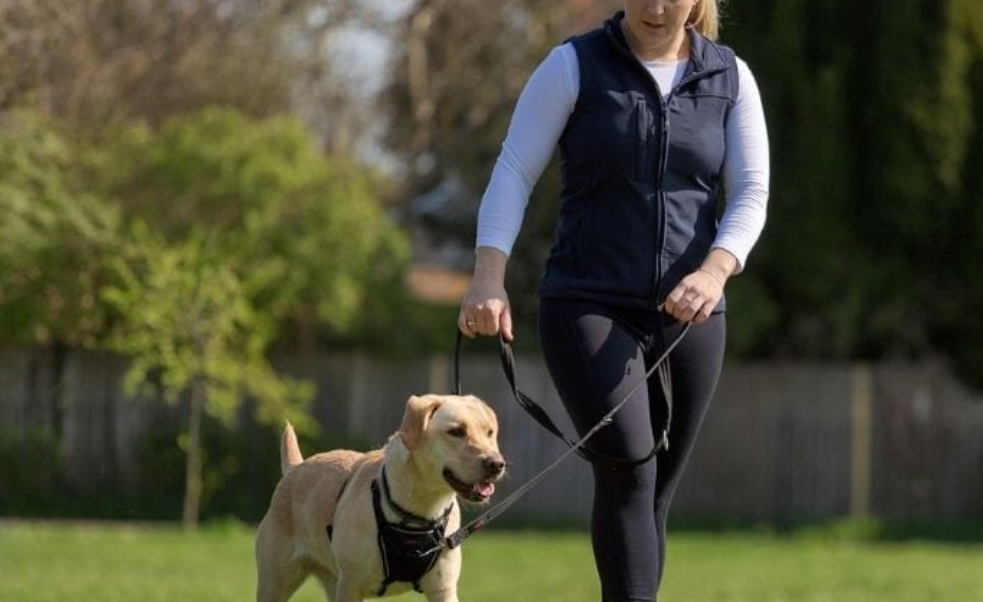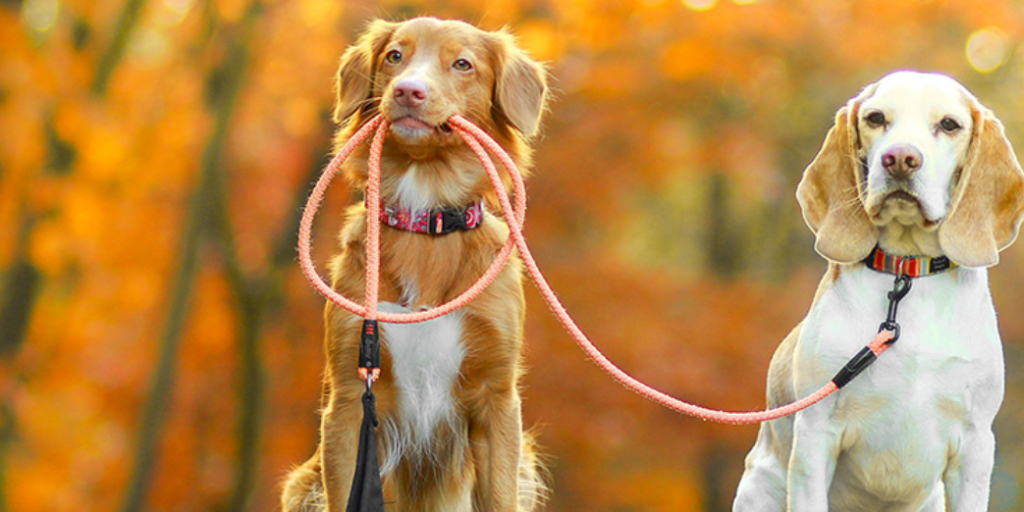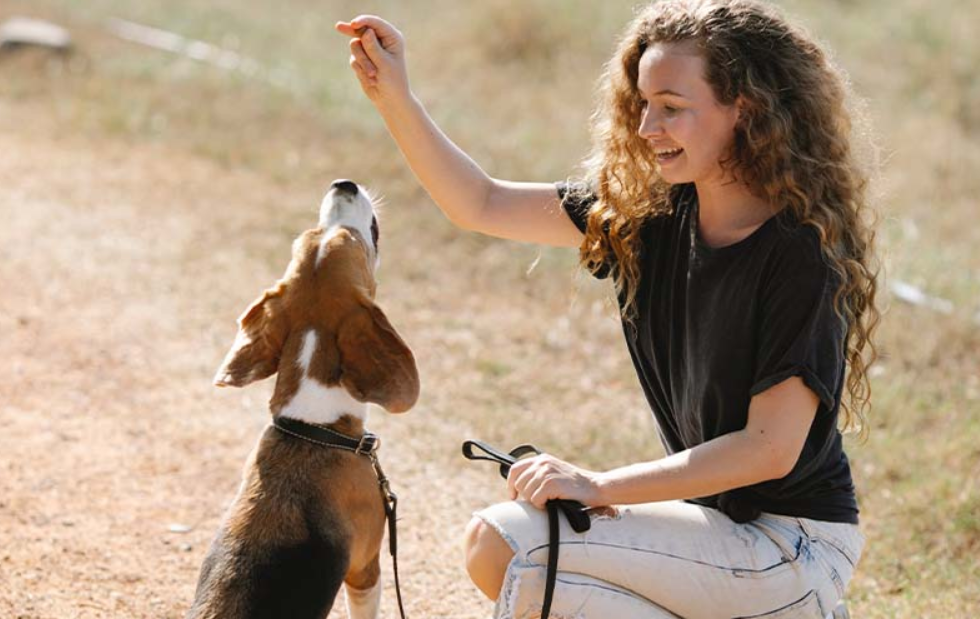Training your puppy to walk on a leash is a crucial step in ensuring safe, enjoyable walks for both you and your furry friend. While dogs instinctively enjoy exploring the world, leash training is a learned behavior that requires patience, consistency, and the right techniques.
Without proper training, even the most adorable puppies can become unruly adults, pulling, chewing, or jumping on strangers. To help you navigate this important aspect of dog ownership, we spoke with Lauren Novack, a renowned dog behaviorist, who shared expert advice on how to leash train dog effectively.
Discover the perfect collar size for an Anatolian Shepherd Dog to ensure comfort and security for your furry friend.

Blog Highlights
ToggleNavigating Life with a New Pet? Head to Pawsitivegears!
If you’re a new puppy or kitten parent, Pawsitivegears by Kinship offers a wealth of resources tailored just for you. Visit Pawsitivegears to explore expert advice, discover new pet tools, and take advantage of special deals curated for your newest family member.
The Basics of Leash-Training a Puppy
Leash training might seem straightforward, but it’s a nuanced process that requires understanding your puppy’s behavior and motivations. According to Lauren Novack, “Puppyhood is an excellent opportunity for leash training since puppies tend to follow their owners around pretty closely already. You can start as soon as you bring them home.”
What Is Leash-Training?
Leash training involves teaching your dog to walk calmly by your side without pulling or yanking. This means your puppy learns to focus on you and follow your lead, rather than getting distracted by the myriad of stimuli in their environment—like squirrels, street food, or other dogs.
Overcoming Distractions
The primary challenge in leash training is managing your puppy’s attention amidst a world full of enticing distractions. Novack recommends keeping training sessions short and engaging: “Think two-minute bursts of leash training, break for some play, then repeat for 15 minutes total.” This approach helps maintain your puppy’s focus without overwhelming them.
Training Timeline
“Most puppies can be fully leash-trained within a month,” Novack notes. However, be prepared for a “teenage” phase around nine months of age, where your dog might test boundaries and require reinforcement of previously learned behaviors. Learn more about the unique double-layered coat of an Anatolian Shepherd and how to care for it effectively.
The Leash-Training Gear You’ll Need
Equipping yourself with the right tools is essential to successfully leash train dog. Here are the must-have items recommended by Lauren Novack:

1. A Harness Over a Collar
Why Choose a Harness?
“While you can train a dog with just a collar, a harness is safer for their necks—especially growing puppies,” says Novack. Harnesses distribute pressure more evenly across your dog’s body, reducing the risk of neck strain and injury. If your puppy starts coughing while pulling, switching to a harness can alleviate discomfort. For highly distracted dogs, a head halter can gently guide their attention back to you.
2. A Four- to Six-Foot Leash
Optimal Length for Control
A four- to six-foot leash provides the best balance between control and freedom. “A retractable leash will teach your dog to pull,” warns Novack. Not only can retractable leashes encourage unwanted pulling, but they also pose safety risks, such as your dog darting into traffic before you can react.
3. Small Treats
The Power of Positive Reinforcement
“Treats should be the size of a pea,” advises Novack. Small, easily consumable treats prevent your puppy from becoming too distracted by chewing and ensure continuous training momentum. If your dog’s kibble isn’t enticing enough, mix it with low-sodium turkey hot dogs to create a more appealing reward.
Pro Tip: If you’re using high-value treats, adjust your dog’s meal portions to prevent weight gain.
For insights on whether Pomeranians should wear a collar, including considerations for safety and alternatives, check out this informative article.
How to Leash Train Dog | The Top Steps to Leash-Train Your Puppy
Follow these steps to ensure a smooth leash-training experience:

Step 1: Introduce the Leash or Harness Indoors
Before venturing outside, allow your puppy to get accustomed to wearing their leash or harness indoors. This helps reduce anxiety and makes the transition to outdoor training more manageable.
Step 2: Start in a Safe, Controlled Environment
Ironically, Novack suggests beginning leash training with your puppy off-leash in a safe, confined area: “You don’t actually need a leash to teach your dog to pay attention to you and to walk by your side.” Choose a distraction-free location, such as your backyard or indoors, to establish the foundation of leash manners.
Step 3: Teach Your Puppy to Stay by Your Side
Use treats to encourage your puppy to stay close to your leg. “Build value at that sweet spot by holding a treat where your pup would naturally walk,” explains Novack. Gradually increase the number of steps your puppy takes before receiving a treat, reinforcing the behavior without constant rewards.
Step 4: Transition to Outdoor Environments
Once your puppy reliably walks by your side indoors, introduce the leash outdoors. This adds a layer of complexity with new distractions, helping your puppy generalize the behavior across different settings.
Step 5: Relax the Leash and Encourage Exploration
As your puppy becomes more proficient, allow them to explore with a loose leash. Use verbal cues like “Okay, go sniff” to give permission for brief exploration, reinforcing that staying close earns them the freedom to investigate.
For a comprehensive guide on what kind of harness is best for a Pomeranian, including comfort and safety tips, check out this article.
Leash-Training in Different Locations and Seasons
Leash training isn’t a one-size-fits-all process. Environmental factors like location and weather can impact your training sessions.

Urban vs. Suburban Settings
“In a big city like New York, a simple pee break can involve countless distractions,” Novack notes. Suburban areas with fewer stimuli may present fewer challenges, but consistent training is still key.
Weather Considerations
“Acclimating your dog to all weather conditions is important,” advises Novack. Invest in gear like coats for cold climates and booties to protect paws from salt and rough terrain. Treat tubes, especially those with flavors like peanut butter, are handy for training in colder months when wearing gloves.
Differences Between Leash-Training Puppies and Older Dogs
Training approaches vary depending on your dog’s age and energy levels.

Energy Levels
Puppies often have boundless energy and shorter attention spans. “Train in short, enthusiastic bursts with plenty of breaks,” recommends Novack. Senior dogs, being calmer, may handle longer, more paced sessions but still benefit from consistency.
Established Habits
Older dogs might have ingrained habits that require more time and patience to modify. “Use positive reinforcement and never punish your dog,” Novack emphasizes. Consistency and patience are crucial when training senior dogs.
Discover if the American Eskimo is a guard dog and learn about its suitability for protecting your home.
The Benefits of Leash-Training
Leash training offers numerous advantages for both dogs and their owners:
- Safety: Keeps your dog close, preventing accidents and allowing you to maintain control in potentially hazardous situations.
- Bonding: Strengthens the bond between you and your dog through consistent interaction and communication.
- Health: Encourages regular walks, promoting physical and mental well-being for both you and your dog.
Should I Train My Dog to Walk Off-Leash?
While keeping your dog leashed in public areas is generally recommended for safety, training your dog to walk off-leash in secure environments can be beneficial. It allows your dog to explore while still responding to your commands, ensuring their safety even when not physically restrained.
Dealing with Common Leash-Training Challenges
Leash training can present several obstacles. Here’s how to overcome them:

How to Address Pulling
“If your dog pulls, avoid pulling back against them—and definitely avoid following their pull,” advises dog trainer Robert Haussmann. “Allowing a dog to pull and following them with tension on the leash just reinforces pulling.”
Solution: Consider using a no-pull harness. “A front-clip harness attaches the leash to the chest, making it harder for the dog to pull effectively,” Haussmann explains. This method gently discourages pulling without causing discomfort.
Handling Distractions and Interruptions
Start training in low-distraction environments and gradually introduce more stimuli as your puppy becomes more reliable. Use high-value treats and positive reinforcement to keep your dog focused on you amidst distractions.
Managing Leash Reactivity
If your dog reacts negatively to other dogs or stimuli while on a leash, begin training away from triggers and slowly increase exposure. For example, have a friend walk their dog at a distance, rewarding your dog for calm behavior, and gradually decrease the distance as your dog improves.
Learn about the size collar for an American Eskimo to ensure a perfect fit and comfort for your dog.
FAQs (People Also Ask)
How often should I have leash-training sessions with my dog?
Ideally, practice leash training daily. Puppies may benefit from several short, intense sessions throughout the day, while senior dogs might prefer longer, calmer sessions.
What should I do if my dog doesn’t like to wear a collar or leash?
Your dog may respond better to a different type of collar or harness. Use treats to create a positive association with the gear, gradually increasing the duration your dog wears it.
What are common leash-training cues?
Teach your dog basic commands like “stay,” “sit,” and “come” to reinforce good leash behavior. These cues help manage your dog’s actions and improve overall training effectiveness.
Wrapping Up
Leash train dog, as it is an essential aspect of responsible dog ownership, ensuring safe and enjoyable walks for both you and your puppy. By starting early, using the right gear, and following consistent training methods, you can teach your dog to walk calmly by your side. Remember, patience, consistency, and positive reinforcement are key to building a strong, trusting relationship with your dog.
Additionally, exploring resources like Pawsitivegears can provide further support and tools to aid in your training journey. Discover why Afghan Hound collars are wide by exploring the unique characteristics of this breed and how wide collars enhance their comfort and style.
In many cases, utilizing both a training collar and a leash in tandem can offer a comprehensive approach to training and daily management. This combination allows you to address specific behavioral issues while maintaining overall control and safety, fostering a well-behaved and happy canine companion.








